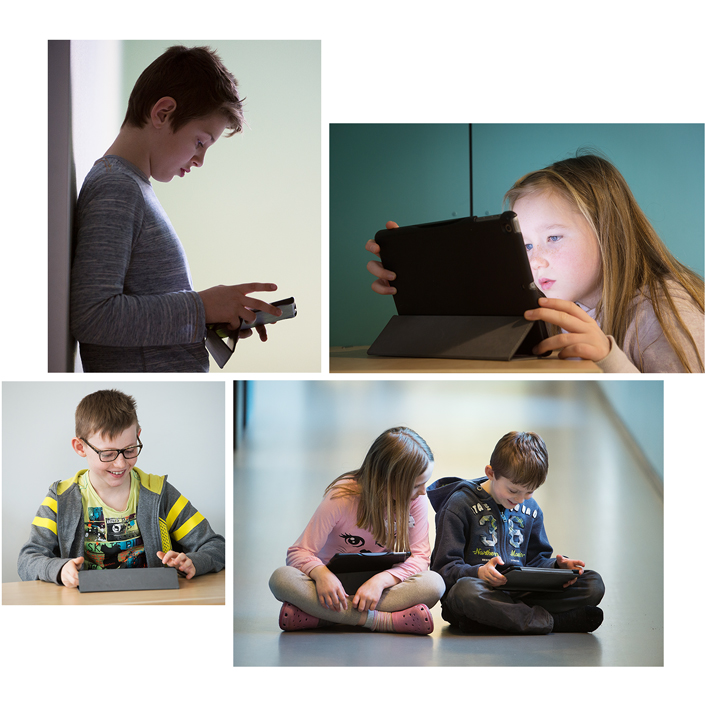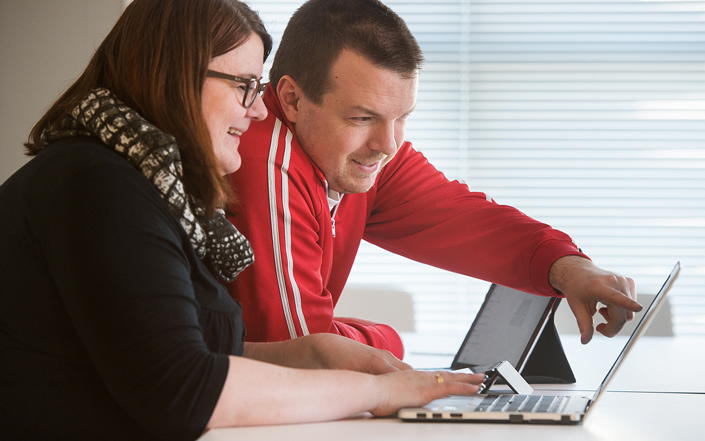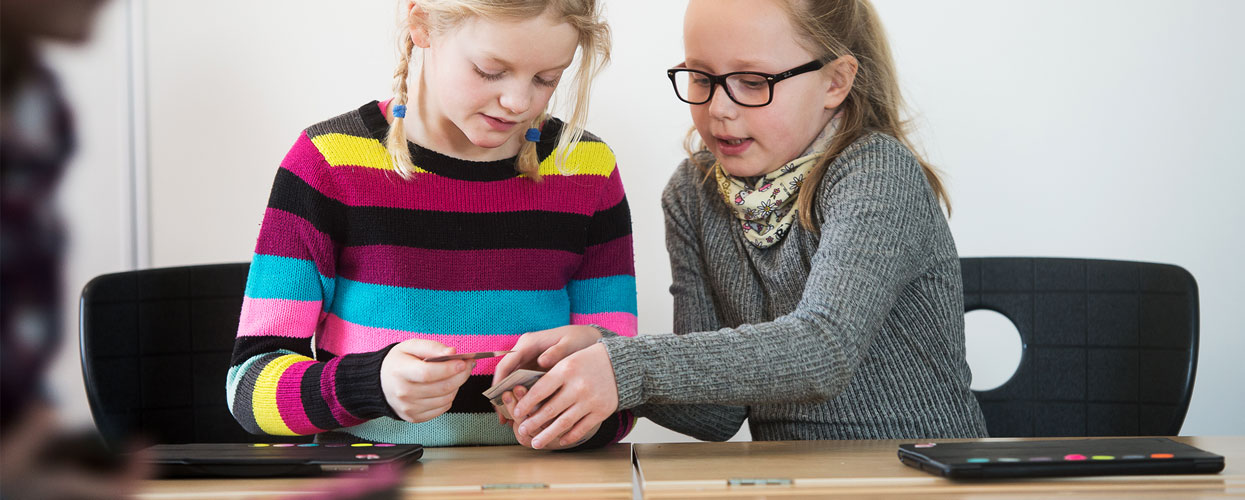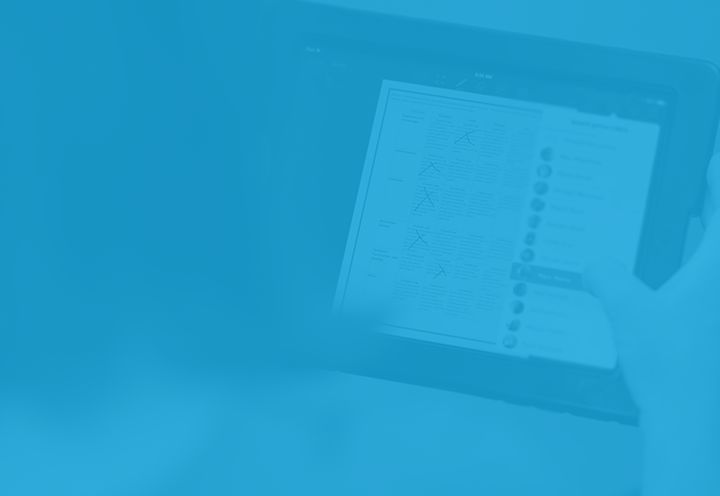In the span of a year, the Drammen Kommune, a municipality in Norway, learned the importance of finding classroom technology that enhanced their education by making it quicker, mobile and more responsive.
A Big Need for Better Technology
Prior to their iPad rollout, a typical elementary or secondary school of 500 students in Drammen Kommune shared 200 PCs equipped with Learning Management Systems (LMSs). It was soon clear that they weren’t enough—students and teachers were spending too much time problem solving tech issues, and assignments were taking much longer to create and complete.
Lars Christian Gjøsæther, district administrator and principal at Åskollen school in the municipality, realized they had to start looking at more efficient technology. To start, they rolled out 80 iPads in the fourth grade at Konnerud school, and the success they observed there gave them the confidence to roll out iPads in six more primary schools in the district in 2015. Soon Lars was given the go-ahead to scale up the iPad project municipality-wide from the director of education. “I started as principal in August 2014, and our director of education wanted us to improve digital learning. We knew that if we were serious about using digital learning that we needed 1:1 devices, and iPads were the best option.”
“I started as principal in August 2014, and our director of education wanted us to improve digital learning. We knew that if we were serious about using digital learning that we needed 1:1 devices, and iPads were the best option.”
When it came to finding apps for their rollout, they had to be easy to adopt, have minimal technical issues and be quick and easy to log into. After months of research and preparation, they found the apps that suited their needs.
Sometimes I think tech can get very complex and business oriented, and we’re not a business, we’re a school.
Joakim Jarl Bjørklund, educator for Drammen Kommune and trainer of Showbie for teachers across their district, explains why they decided to go with Showbie as as replacement for their previous LMS:
“On iPads, you need a place to collect work from apps like Book Creator and Explain Everything. If you get teachers to see that Showbie can do that, they get the ‘eureka’ moment of having a place to collect all of their work.”

While it’s a big transition to go from 200 PCs to 1:1 iPads, Lars explains that having simple, streamlined applications on the iPads helped introduce iPad technology to the municipality’s educators.
“The genius part about Showbie is the simplicity—it’s so easy to use. I’ve been working with an LMS for a long time and there are so many possible failures: the integration can fail, you can have login problems,” Lars explains. “Sometimes I think tech can get very complex and business oriented, and we’re not a business, we’re a school.”
There are different levels of knowledge about technology and education, so you need to ensure the training is efficient enough for the spectrum of teachers.
The Powerful Impact of Going Paperless
In terms of the financial cost of rolling out iPads and using Showbie, Lars says his school alone buys 2,000 kilograms (4,400lbs) of paper annually. Since this is the first year of their iPad rollout, he hasn’t yet discovered the cost savings of going paperless with Showbie, though he’s confident there will be a clear impact once they crunch the numbers next year.
“At our school, the main cost for our copying machine is 150,000 kronor (about $22,150 USD) a year, while Showbie costs Åskollen school 20,000 kronor (~$2,950 USD). The difference between these two numbers is huge.”
The Paperless Savings Calculator
Find out how much your school can save with Showbie by adjusting the sliders on our Paperless Savings Calculator:
When asked what the teachers at Drammen Kommune love the most about Showbie, Joakim confesses it’s difficult to choose. One of his favourite features is Showbie’s paperless mobility, as it gives teachers and students flexibility when it comes to when and how they complete work and provide feedback.
“Choosing my favorite Showbie feature is like choosing among my own kids!” Joakim jokes. “One of the things I like is that each student can upload their reading tasks at home and I can hear them on the way to work or at home on my couch rather than use up one hour at school in the classroom—I really like the mobility of it.”
The Key to Preparing for a Successful 1:1 iPad Rollout
Though Drammen Kommune has found success in their 1:1 rollout, they’ve learned a lot along the way. One of the most important attributes they acknowledge is having supporters and technology leaders early on who are passionate about seeing it through.
“Our plan is to have all students from 7-13 years old with their own device—and maybe even younger.”
“You need teachers that understand the technology to help push the rollout forward. If they don’t understand the need for change, it will be very difficult and you won’t get the support or the resources you need,” Lars explains.

One of the ways to achieve that is through proper and thorough training from educators like Joakim, to ensure all educators know how to get the most out of their iPads.
“If you don’t give teachers enough training, it will be difficult to start. Some teachers will embrace it right away, but there are different levels of knowledge about technology and education, so you need to ensure the training is efficient enough for the spectrum of teachers,” explains Joakim.
You need teachers that understand the technology that pushes the rollout forward.
He also mentions that training educators from their point of view is important, rather than demonstrating Showbie by switching back and forth between teacher and student views. Students will mostly understand the technology right away, and as long as the teacher is well-versed in Showbie they’ll be able to easily guide students through it.
Additionally, Lars emphasizes getting early buy-in from the IT department (if your school or district has one): “In terms of preparations, make sure you have your IT department collaborating with you. If you have your own IT department, they need to be on board, because there is some infrastructure needed to roll out new devices.”

Moving Upward and Onward to Drammen 2.0
One of the more exciting results of rolling out 1:1 iPads in their district is that Åskollen school was visited by the Prime Minister of Norway, Erna Solberg, who wanted to see how the Kommune was utilizing technology in their classrooms.
“The Prime Minister wanted to see how we were working with iPads in education. Some of our pupils were documenting her visit with their iPads as they followed her. One of the students even got her to give them feedback in Showbie with voice notes!”

Overall, Drammen Kommune is excited about their future with 1:1 technology, and they’re aiming to roll out even more iPads in their municipality as they look to improve their digital learning more by 2020.
“Our plan is to have all students from 7-13 years old with their own device—and maybe even younger,” Lars explains, excited for where their future in education technology will take them. “The main thing is to make it easy by taking it one step at a time.”


